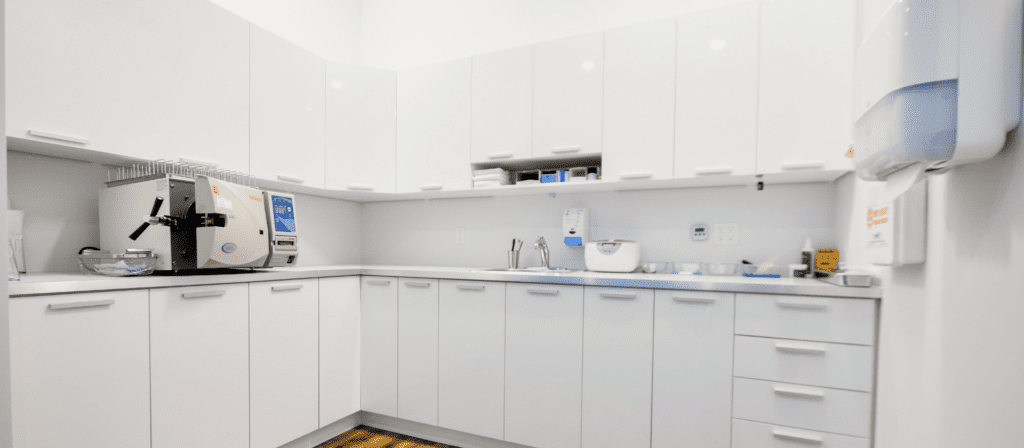Privacy policy
General Information
1. General Information
Protecting privacy is of paramount importance to PiedRéseau Inc. (referred to as “the Organization,” “we,” “our”). To this end, we have established robust protective measures and effective management practices for your personal information in accordance with applicable laws.
This Privacy Policy (the “Policy”), when read in conjunction with our website’s terms of use and service agreements that you have entered into with the Organization, outlines our procedures for collecting, using, processing, disclosing, and retaining personal information belonging to our customers, visitors, and users.
By using our website, www.piedreseau.com (the “Website”), or any of our services, you agree to the collection, use, processing, disclosure, and retention of your personal information as described herein. If you do not consent to adhere to and be bound by this Policy, you are not authorized to visit, access, or utilize our Website or services, nor to share your personal information with us.
This Policy does not encompass the personal information of employees, representatives, or consultants of the Organization, or of any other individuals associated with the Organization. Additionally, it does not cover information that does not meet the criteria for personal information as defined by applicable laws.
1.2. Responsible for the Protection of Personal Information
Questions, comments, or complaints regarding this Policy and the Organization’s privacy practices can be directed to our Responsible for the Protection of Personal Information using the following contact details:
Email: admin@unionsante.ca
Address: Nolina Cimpoies Dragan
Attn: Responsible for the Protection of Personal Information
2300 King Street West, J1J 2E8
Sherbrooke, Quebec
Canada
The following words and phrases, when capitalized in the text, hold the specified meanings unless the context explicitly or implicitly dictates otherwise:
“Service Provider”: Any individual or legal entity processing data on behalf of the Organization. These entities or individuals are third parties engaged by the Organization to facilitate Services, deliver Services on behalf of the Organization, perform Services related to the primary Services, or aid the Organization in analyzing Service usage.
2. Definition
“Personal Information”: Information concerning an identifiable natural person, meaning information that directly or indirectly discloses something about the person’s identity, characteristics (e.g., abilities, preferences, psychological tendencies, predispositions, mental abilities, character, and behavior of the person concerned), or activities. This includes information presented in any medium or form (written, graphic, auditory, visual, computerized, or otherwise).
“Sensitive Personal Information”: Personal Information that, due to its nature or the context in which it is used or communicated, elicits a heightened expectation of privacy. This may encompass medical, biometric, genetic, or financial data, as well as information about a person’s life or sexual orientation, religious or philosophical beliefs, membership in organizations, or ethnic origin.
“Responsible for the Protection of Personal Information”: The individual responsible for implementing this Policy, whose contact details are identified in Section 1.2 of this Policy.
“Services”: Services refer to the Website and all related services offered by the Organization. These include professional services and, when applicable, associated media, printed materials, and “online” or electronic documentation.
3. Processing of Personal Information
3.1. Collection of Personal Information
Your Consent to Share Personal Information
The Organization values your privacy and data confidentiality. Consequently, we have crafted this privacy policy to provide insights into what information we gather, how we process it, and when we may need to share it with subcontractors or third parties.
By granting your consent, you authorize the Organization to collect and process your personal information required to deliver our services. It’s important to note that you maintain control over your personal information at all times, and the consent you provide during the collection or processing of your personal information can be withdrawn at any time. We will ensure that your choice is respected in accordance with our legal obligations.
Furthermore, it is crucial to read this Policy in conjunction with our Terms of Use document on the Website.
In the course of our operations, we may collect, process, and utilize various types of Personal Information, provided it is permitted by law. This information may include, but is not limited to, the details outlined below:
Via our Website:
• Contact information such as your name, email address, and company name for newsletter subscriptions.
• Contact information such as your name, phone number, email address, availability, and the reason for your clinic appointment request.
• Information automatically collected during your use of the Website and our Services. This includes connection details and other information related to your activities on the Website, such as your IP address, pages viewed, visit timestamps, browser type, operating system of your device, and other hardware and software information.
• Geolocation data to facilitate locating a nearby clinic.
• Information pertaining to the nature of your request, your preferred contact method, your preferences for future clinic follow-up, and potential communication with our medical advisors.
• Usage, performance, and diagnostic data when interacting with the Website or Services.
When Communicating with Our Medical Advisors:
• Medical records and other health-related information, including symptoms, test results, prescriptions, treatment plans, and any communication exchanged between you and our medical advisors via our secure messaging platform.
• Information provided when seeking medical advice or consultation, encompassing your medical history and the purpose of your consultation.
3.2. Collection of Sensitive Personal Information
PiedRéseau Inc. does not intentionally collect, process, or disclose sensitive personal information as defined by applicable laws, except under the following circumstances:
• When you voluntarily disclose sensitive personal information as part of a request for medical advice or consultation with our medical advisors. In such cases, your consent is required, and we will obtain your explicit consent before collecting and processing this information.
• When the collection and processing of sensitive personal information are mandated or authorized by applicable law.
If you choose not to provide sensitive personal information to the Organization in the aforementioned situations, please refrain from submitting this information via the Website or our Services. Not providing certain information may limit your access to and use of specific features on the Website and within our Services.
3.3. Use of Personal Information
The Organization employs your personal information for the following purposes:
• To provide and maintain our Services: We use your personal information to grant you access to our Website and Services, as well as to ensure the proper functioning of our Services and enhance their quality.
• To manage your account: Your personal information is used to create and manage your account, respond to your requests, and offer you information and customer support related to our Services.
• To communicate with you: We may employ your contact information to send you updates, newsletters, marketing materials, and other communications related to our Services, provided you have granted us the requisite consent or possess the legal right to receive such communications according to applicable law.
• For research and analysis: We may utilize your personal information to conduct research, analyze user behavior and trends, and improve our Website and Services.
• To fulfill legal obligations: Your personal information may be used to comply with legal obligations, such as tax and accounting requirements, and safeguard our rights and interests.
• To protect our rights and interests: Your personal information may be employed to investigate, prevent, or take action against unlawful activities, violations of our terms of service, or threats to the security or integrity of our Website and Services.
• With your consent: Your personal information may be used for additional purposes, subject to obtaining your explicit consent.
3.4. Disclosure of Personal Information
The Organization may disclose your personal information to third parties under the following circumstances:
• With your consent: We may share your personal information with third parties when you have explicitly consented to such sharing.
• To service providers: We may share your personal information with third-party service providers who perform services on our behalf. These services encompass hosting, data analysis, payment processing, customer support, and email communication. These service providers are contractually obligated to protect your personal information and are not authorized to use or disclose it for any purpose other than providing services on our behalf.
• For legal reasons: Your personal information may be disclosed to fulfill legal obligations, respond to lawful requests from law enforcement agencies, and protect our rights and interests.
• In connection with a sale or merger: If the Organization is involved in a merger, acquisition, or sale of all or part of its assets, your personal information may be transferred as part of the transaction.
• To protect our rights and interests: We may disclose your personal information to investigate, prevent, or take action against unlawful activities, violations of our terms of service, or threats to the security or integrity of our Website and Services.
4. Your Rights
You possess certain rights concerning your personal information, in accordance with applicable law. These rights may encompass:
• Access: The right to request access to the personal information we hold about you and obtain a copy of it.
• Rectification: The right to request correction of any inaccuracies in your personal information.
• Erasure: The right to request the erasure of your personal information, subject to specific legal exceptions.
• Restriction: The right to request that we limit the processing of your personal information in particular circumstances.
• Portability: The right to receive your personal information in a structured, commonly used, and machine-readable format and request its transfer to another data controller, to the extent mandated by applicable law.
• Objection: The right to object to the processing of your personal information for specific purposes, such as direct marketing, as permitted by applicable law.
• Withdrawal of Consent: If we rely on your consent to process your personal information, you have the right to withdraw your consent at any time.
To exercise any of these rights, please contact us using the contact information provided in Section 1.2 of this Policy. We will respond to your request as required by applicable law.
5. Security Measures
We take reasonable and appropriate measures to safeguard your personal information from loss, theft, misuse, unauthorized access, disclosure, alteration, and destruction. We have implemented physical, technical, and organizational measures designed to protect the confidentiality, integrity, and availability of your personal information.
However, please be aware that no method of transmission over the internet or electronic storage is entirely secure, and we cannot guarantee the absolute security of your personal information.
6. Data Retention
We will retain your personal information for as long as necessary to fulfill the purposes for which it was collected and to comply with legal and regulatory requirements. The specific retention period for your personal information may vary depending on the purpose of the processing and applicable law.
7. Changes to this Policy
We may periodically update this Policy to reflect changes in our practices or for other operational, legal, or regulatory reasons. The revised Policy will be posted on our Website along with the “Last Updated” date. We encourage you to periodically review this Policy to remain informed about how we collect, use, and protect your personal information.
8. Contact Us
If you have any questions or concerns regarding this Policy or our privacy practices, or if you wish to exercise your rights concerning your personal information, please contact us




















